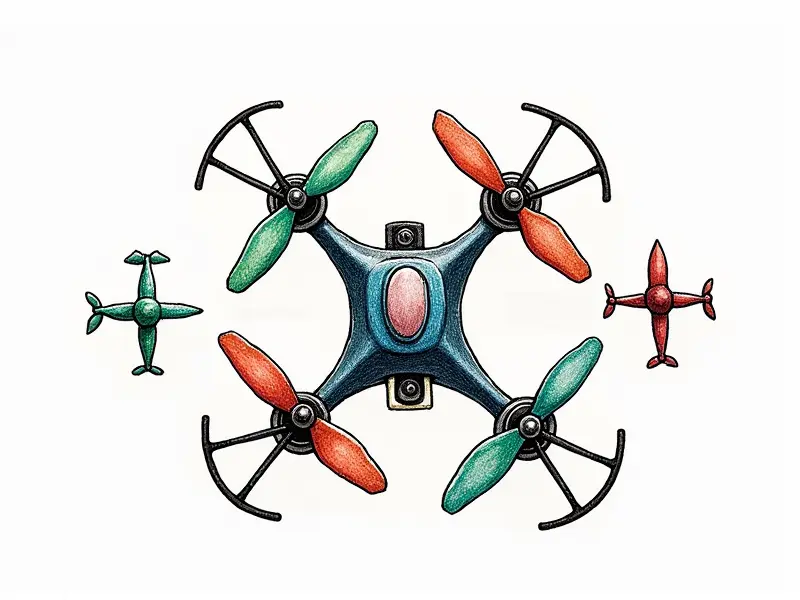Best microcontroller for drones?

Which Microcontroller Rules the Skies for Drones?
The world of drones is rapidly evolving, with advancements in technology making it possible to build increasingly sophisticated and capable unmanned aerial vehicles (UAVs). At the heart of every successful drone project lies a powerful microcontroller that manages flight control, sensor data processing, and communication. This article delves into the best microcontrollers for drones, providing insights on which MCU is ideal for different types of builds.
Top Brain for Tiny Drones: Microcontroller Showdown
The choice of a microcontroller (MCU) can significantly impact your drone's performance and capabilities. Here’s a breakdown of some top contenders:
- NVIDIA Jetson Nano: Ideal for drones requiring high computational power, such as those used in AI applications.
- PX4 Flight Stack with STM32F411RE: A robust and reliable option for advanced flight control systems.
- Cypress CY8C5766AXI-403: Offers excellent power efficiency, making it suitable for long-duration flights.
Best Microcontroller for FPV Racing Drones 2025
FPV racing drones demand high-speed processing and real-time data handling. The OpenPilot PX4 Flight Stack, paired with the STM32F411RE microcontroller, is a top choice for FPV racers due to its fast response time and robust performance.
Choosing the Right Microcontroller for Your Drone
Selecting the right MCU depends on several factors:
- Type of drone: Miniature, racing, or multi-rotor?
- Budget constraints: Cost-effective options versus high-end solutions.
- Required features: GPS support, camera integration, obstacle avoidance.
Ultimate Microcontroller Pick for Miniature Drones
For miniature drones, the ESP32 microcontroller is a popular choice. It offers Wi-Fi and Bluetooth connectivity, making it ideal for small-scale projects that require wireless communication.
The Smart Choice: Microcontrollers for Drone Lovers
Drones enthusiasts often seek MCUs that offer flexibility and ease of use. The NXP LPC1769 is a versatile option with ample memory and processing power, suitable for both beginners and experienced builders.
Key Features to Consider
- Processing Power: Ensure the MCU can handle real-time data processing efficiently.
- Memory Capacity: Adequate RAM and flash memory are crucial for running complex algorithms.
- Connectivity Options: Support for Wi-Fi, Bluetooth, or other wireless protocols enhances functionality.
Top Microcontrollers for Drones Explained
The following microcontrollers stand out in the drone community due to their performance and reliability:
- NXP LPC1769: Known for its robustness and ease of programming.
- Cypress CY8C5766AXI-403: Offers excellent power efficiency, ideal for long-duration flights.
- PX4 Flight Stack with STM32F411RE: A reliable choice for advanced flight control systems.
Microcontroller Battle: Who Wins for RC Airplanes?
For remote-controlled (RC) airplanes, the STM32F4 series microcontroller is a strong contender. Its high-speed processing and robust flight control capabilities make it suitable for RC planes.
Best Microcontroller Options for FPV Racing Teams
The PX4 Flight Stack with STM32F411RE remains the top choice for FPV racing teams. Its fast response time and robust performance ensure smooth and responsive flight control, essential for high-speed racing.
Essential MCUs for Advanced Drone Builds
For advanced drone builds that require complex algorithms and real-time data processing, consider the NVIDIA Jetson Nano. Its powerful computational capabilities make it ideal for AI-driven drones and other sophisticated applications.
Additional Tips
- Community Support: Look for MCUs with strong community support and extensive documentation.
- Development Tools: Ensure the MCU comes with user-friendly development tools and libraries.
In conclusion, selecting the best microcontroller for your drone project depends on several factors including the type of drone, required features, and budget constraints. By considering these aspects and exploring the options discussed in this article, you can make an informed decision that enhances your drone's performance and capabilities.

